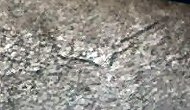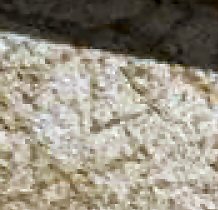gepd wrote:
Well, I can't be 100% sure but we have some very nice high-res images and videos from the well-preserved peribolos and one can't see anything that resembles the Strymon block graffiti.
But I found some things in your nice high resolution images that might be graffiti and don’t look like the normal finish. You also have to take into account that these blocks have probably only been brushed free of soil (not washed) so there may still be earth in scratches and depressions, making graffiti difficult to discern. These are from your photos:

- possiblegraffiti.jpg (9.25 KiB) Viewed 2699 times

- possiblegraffiti2.jpg (14 KiB) Viewed 2699 times

- possiblegraffiti5.jpg (8.01 KiB) Viewed 2699 times
gepd wrote:
I don't know how to distinguish them. I just rely on the excavator statements for that.
Whether these scratchings are inscriptions or graffiti or contracts or masons’ marks seems largely to be a matter of subjective interpretation and what is convenient to the argument that they are being used to support. Not the kind of reasoning that can be relied upon in attributing a tomb/monument. In particular it would seem impossible to determine scientifically whether any particular marks are original to the construction of the monument or from later years or centuries. What is required is an holistic study of ALL the letters, monograms and scratchings in order to reach any possible conclusions (and not the selection of certain graffiti in isolation).
gepd wrote:
I personally see most - if not all letters of Hephaestion in the inscription. Yes, Η & Φ stand out, but for me Ω (top right), Α (under the H line), Ι (next to A), Σ (under Ω) and N are easily distinguishable. Hephaestion is a very good candidate for that, but you are right that this is one interpretation, not a fact. I am open to other possibilities - I just can't think of any (again, mostly due to ignorance). The example of ΔΙΖΑ ΑΛΚΟΥ you put earlier has also letters in a mixed form but experts could come out with the correct reading. Not sure how, but they did.
ΔΙΖΑ ΑΛΚΟΥ is much more obvious than “HEPHAISTION” because all the letters are clear and they are largely in the right order and they are roughly the same size. It is striking that the “HEPHAISTION” letters are not in the right order and some of the smaller letters are at jaunty angles and are located at different places or at different angles within the monogram in different versions (or not there at all in one) and the largest letters are 4 or 5 times taller than the smallest! The archaeologists seem similarly to have moved beyond what can actually reliably be seen in the case of their reconstruction of the painting. Names of places or other things have also to be considered. It would be nice to put high resolution photos of these inscriptions in front of some expert epigraphists who had not heard the current interpretation and to see what they came up with (but that might be impossible now due to the publicity for “HEPHAISTION”).
gepd wrote:
I have no way to know that. I would just wait to hear recorded versions of the talks to clarify some details. I am not sure, for instance, that the published inscription was part of the peribolos but that was excavated next to the peribolos.
I only know that the slides presented with some of the graffiti are labelled peribolos and that the blocks look a bit like the least tall type of the drafted margin series (Low Full Thickness Wall Blocks). Other reports indicate that one inscription was found on top of the mound where the lion stood.
gepd wrote:
Miller said in his article that it was only the peribolos blocks (geisons and orthostates) that had names carved on them. Nothing else that seems to come from the Kasta hill (lion, shields from the lion base) have similar graffiti on them. If all these happened when the tumulus constructions were dismantled, why see carvings on selected parts?
I have found records of 429 blocks/fragments (excluding the dozen or so lion fragments) that were dredged from the Strymon. Of these at least 377 are drafted margin series from the peribolos wall of the Amphipolis tomb. Of the remaining 52, 35 were in such a bad state as to be unidentifiable (and you probably would not have been able to see graffiti), 4 others were Roman. So there were only 13 other fragments that might have been from the tomb and these were mostly much smaller than the drafted margin blocks. Therefore it is not statistically significant that the graffiti were only found on the drafted margin blocks, because they constituted about 98% of the available surface area for scrawling graffiti upon.
gepd wrote:
My assumption is that the peribolos blocks where collected at different locations than other tomb-tumulus parts.
Your assumption would offer another explanation for the graffiti only being on the drafted margin series: i.e. that the graffiti were added at the location from which the blocks were collected (the tomb) and not when all the blocks were brought together at the dam south of Amphipolis.
gepd wrote:
Also, as we know there were cranes involved in an organized dismantling of the wall. I assume blocks were meant to be moved away for construction material, so they were loaded to be transported away. They were not dismantled to be collected outside Kastas for soldiers and workers to write their names on the back and on the side.
It is not clear that the dismantling and the collection were done at the same time by the same group of people. Even if it was, they may have piled the blocks next to a road for collection by carts some time later. There is really no reason why the graffiti on the Amphipolis blocks could not have been added at the Amphipolis tomb. Also, Bakalakes believed that the dam in which they were subsequently re-used had water flowing over its top surface, so the graffiti could not have been added after they were incorporated in the dam.
gepd wrote:
And even if they did that, none of them would ever write "ΑΡΕΛΑΒΟΝ" next to his name. None of the other name carvings have anything similar. They are just names (I have read the works by Bakalakes and Keramopoulos).
As you have also pointed out, there were other graffiti that were not analysed so closely, because they did not seem to be names. Graffiti in general is mostly names/monograms/initials with rarer instances of other words/symbols. There is nothing unusual in the graffiti that we are seeing on the Amphipolis tomb blocks. Many ancient monuments have similar ancient graffiti.
Best wishes,
Andrew


